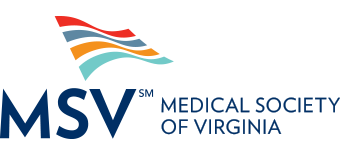Leading Virginia Healthcare Organizations Partner with National ALL IN: WellBeing First for Healthcare Coalition to Promote Strategies Focused on Supporting Clinicians, Healthcare Workforce
RICHMOND, VIRGINIA, December 14, 2022 – The Virginia Hospital & Healthcare Association (VHHA), the Virginia Nurses Association (VNA) and the Medical Society of Virginia (MSV) are jointly supporting a new statewide initiative to enhance healthcare organizational efforts to protect the mental and emotional well-being of healthcare professionals. Led by the ALL IN: WellBeing First for Healthcare coalition, co-founded by the Dr. Lorna Breen Heroes’ Foundation and #FirstRespondersFirst, the ALL IN: Caring for Virginia’s Caregivers initiative seeks to support Virginia hospitals and health systems in redesigning their workplace environments to help team members feel valued and supported.
“Coming off three years of pandemic duty and immediately transitioning into an intense flu and respiratory syncytial virus (RSV) surge has been challenging for hospitals, health systems and their team members who have bravely dealt with the strain of working under these extraordinary conditions,” said Sean T. Connaughton, president and CEO of VHHA. “Our shared goal as a hospital community is to make Virginia the healthiest state in the nation. Achieving that means caring for patients and communities as well as taking care of the healthcare professionals who offer comfort and compassionate medical care to people in need. Doing this involves concerted efforts to strengthen our hospital and health system work environments through supportive staff programs. Through the first-of-its-kind ALL IN: Caring for Virginia’s Caregivers partnership framework, we are leveraging national expertise with local experience and perspective to address healthcare workforce burnout challenges and support those clinicians who are there for us and our communities 24/7/365.”
Hospitals and health systems participating in the initiative commit to:
“We have long been committed to making tangible tools readily available to physicians and being a safe, understanding place to get guidance on how and where to seek well-being and mental health support without judgment or punishment,” said Melina Davis, CEO of MSV. “We’re excited to build on our work and expand our overall capacity, so all Virginia’s healthcare teams have the support they need to stay well and prevent burnout.”
The initiative’s programming is developed around ALL IN’s Healthcare Workforce Rescue Package, which include the top evidence-based actions healthcare leaders can take to support their workforce and build a foundation for a long-term system well-being strategy, including:
- Pursue Operational Efficiencies: Identify and remove low-value work, such as reducing electronic health records (EHR) clicks for common workflows and minimizing inbox notifications;
- Designate a Well-Being Executive: Appoint one person with operational authority to align all clinician well-being efforts; and
- Do More than Employee Assistance Programs (EAP): Ensure adequate mental health care by providing quality mental health counseling, standing-up a peer-support program and offering psychological first aid training.
“The health and culture of every practice setting, including hospitals and health systems, plays an important role in the happiness and well-being of its nurses and other clinical staff,” said Janet Wall, CEO of VNA. “Nurses are critical to the health of Virginia and we’re eager to collaborate to address the underlying system challenges that are preventing workplaces from being healthy work environments.”
The initiative is being launched with a calling to Virginia hospitals and health systems to remove one of the most substantial barriers clinicians face to their mental health and well-being: fear of losing their job because of overly broad and invasive mental health questions on credentialing applications that may be stigmatizing or cause reluctance to seeking appropriate treatment. The hospitals and health systems that audit and change language on credentialing applications will be recognized as being ALL IN for prioritizing clinician well-being and be awarded as a WellBeing First Champion.
“Mental health questions were often added to credentialing applications out of a misplaced desire to protect patients and families from clinicians who might not be fit to give care. Yet there is no evidence they serve that function,” said Corey Feist, co-founder of ALL IN: WellBeing First for Healthcare and president of the Dr. Lorna Breen Heroes’ Foundation. “When clinicians are afraid to seek the mental health care they need, they may find themselves unable to work due to burnout or behavioral health disorders. Some, like my sister-in-law Lorna, may turn to suicide.”
“That’s why national leaders, including the American Medical Association, American Hospital Association, Joint Commission, National Academy of Medicine and the U.S. Surgeon General, have also called on removing this barrier. Ensuring that clinicians can access necessary mental health care not only benefits their well-being, but also improves the health of our entire country. Patient outcomes will improve when we prioritize clinician well-being, because to care for others, clinicians must also be cared for,” continued Feist.
For hospitals and health systems interested in being recognized as a WellBeing First Champion, visit ALL IN’s online portal to verify your organization’s credentialing applications are free from unnecessary mental health questions.
About ALL IN: WellBeing First for Healthcare
ALL IN: WellBeing First for Healthcare, co-founded by #FirstRespondersFirst and The Dr. Lorna Breen Heroes’ Foundation, is as a coalition of leading healthcare organizations committed to:
- Advancing a state where the wellbeing of the health care workforce is prioritized, and individual health care workers feel valued and supported so they can sustain their sense of purpose and meaning in their work; and
- Making beneficial progress against persistent mental health and wellbeing challenges that disadvantage our healthcare workers, and therefore, our healthcare systems and the future of public health.
About the Medical Society of Virginia
The Medical Society of Virginia (MSV) serves as the voice for more than 30,000 physicians, residents, medical students, PAs and PA students, representing all medical specialties in all regions of the Commonwealth. The association was founded in 1820 and is headquartered in Richmond, Virginia. MSV strives to advance high-quality healthcare and make Virginia the best place to receive care and practice medicine.
About the Virginia Health and Hospital Association
The Virginia Hospital & Healthcare Association is an alliance of 110 hospitals and 25 health delivery systems that develops and advocates for sound healthcare policy in the Commonwealth. Its mission is to achieve excellence in both healthcare and health to make Virginia the healthiest state in the nation. Its vision is through collaboration with members and stakeholders, to ensure the sustainability of Virginia healthcare system, transform the delivery of care to promote lower costs and high value across the continuum of care and to improve health for all Virginians.
About the Virginia Nurses Association
The Virginia Nurses Association is the professional organization representing the interests of the more than 118,000 registered nurses in the Commonwealth of Virginia, inclusive of all areas of specialization, clinical settings and work environments. We are the voice of nursing, protecting practice by ensuring that nursing’s priorities are incorporated into legal and regulatory decisions, and ensuring our voice and influence at the Capitol and growing grassroots efforts.


